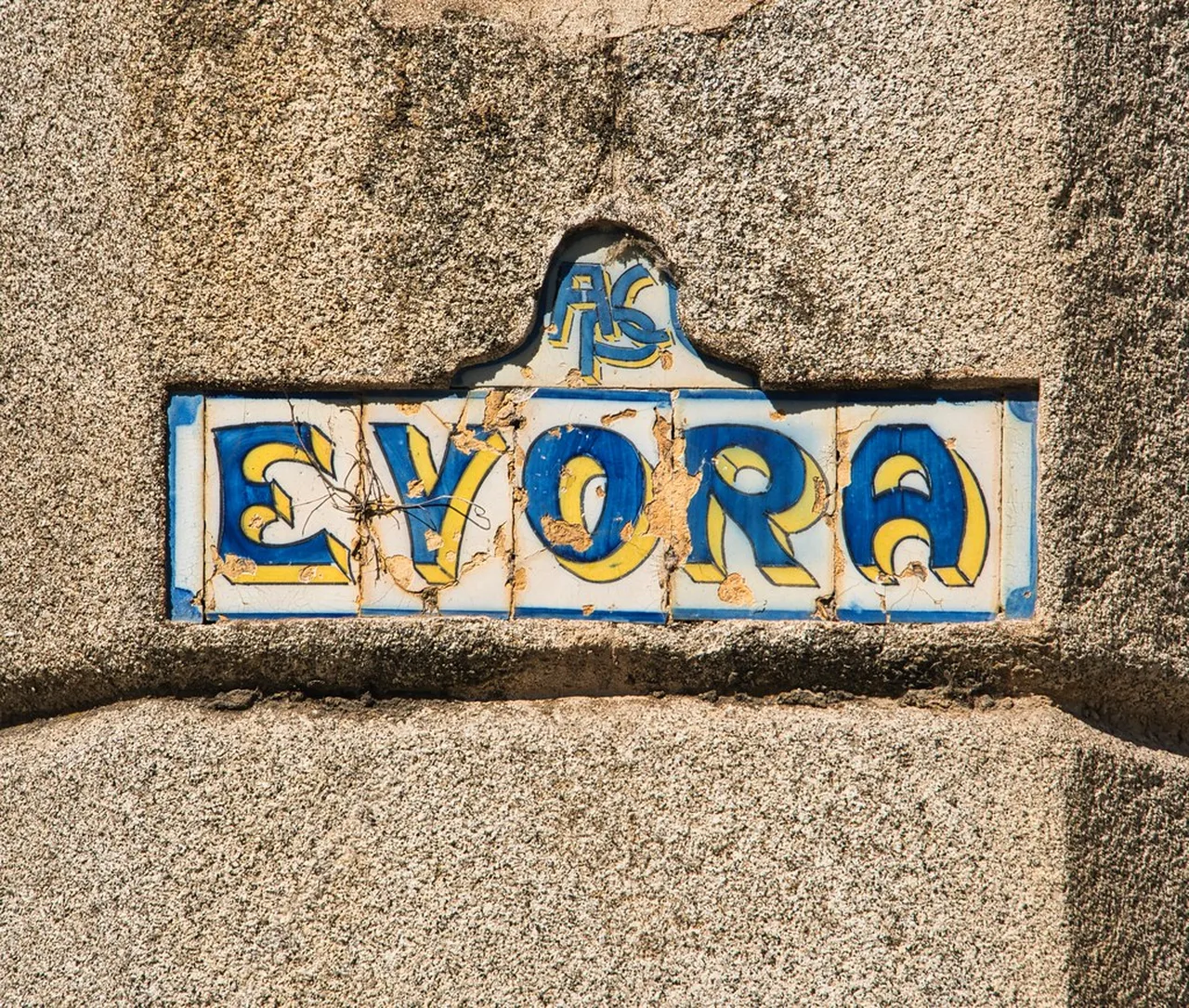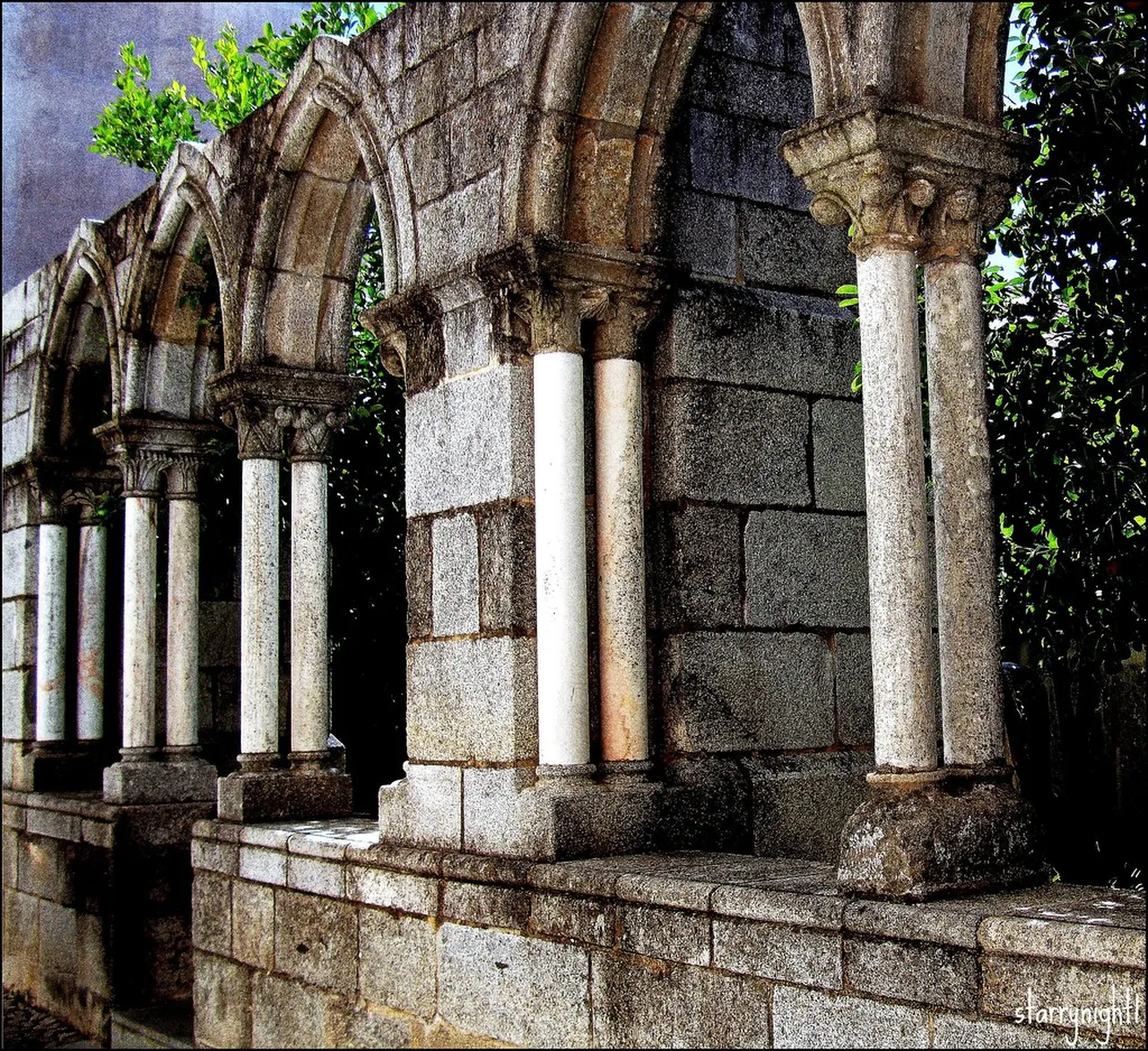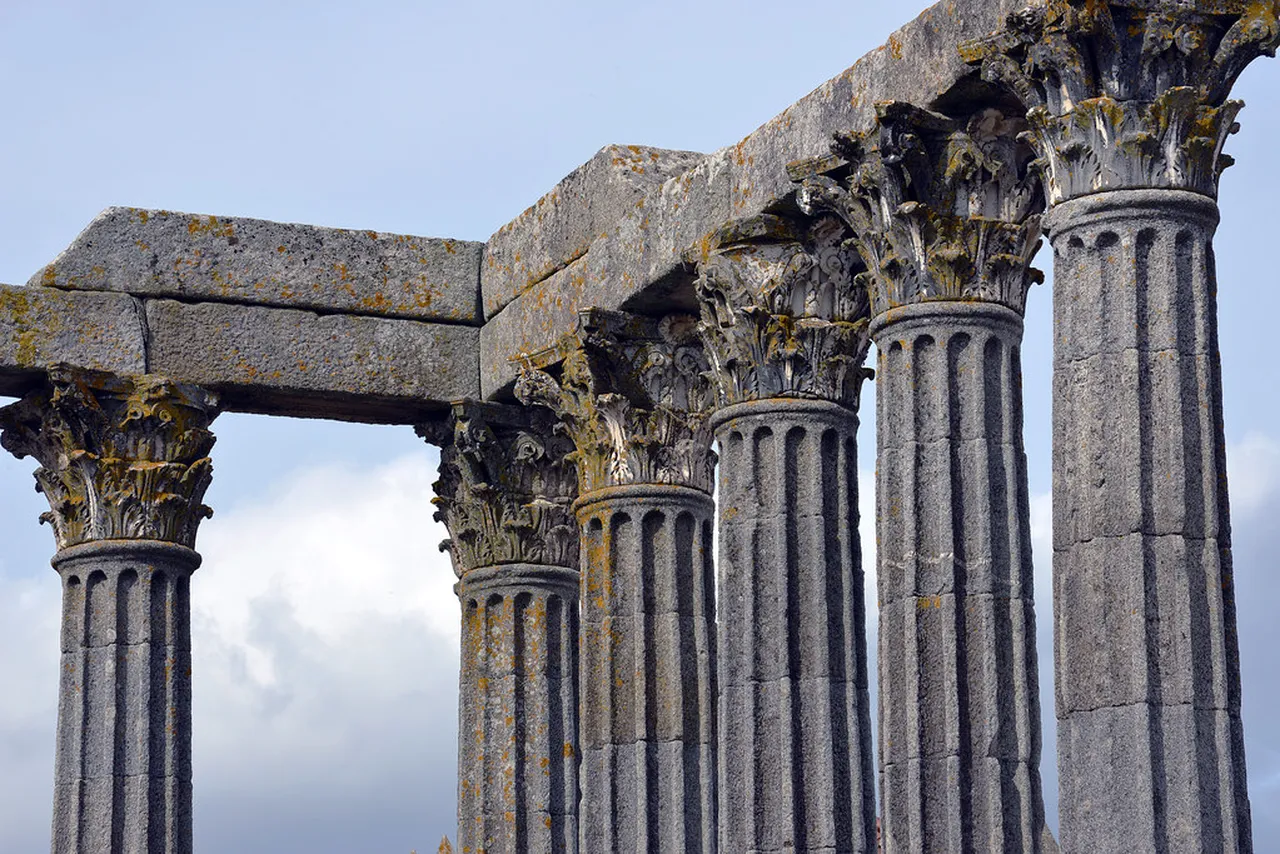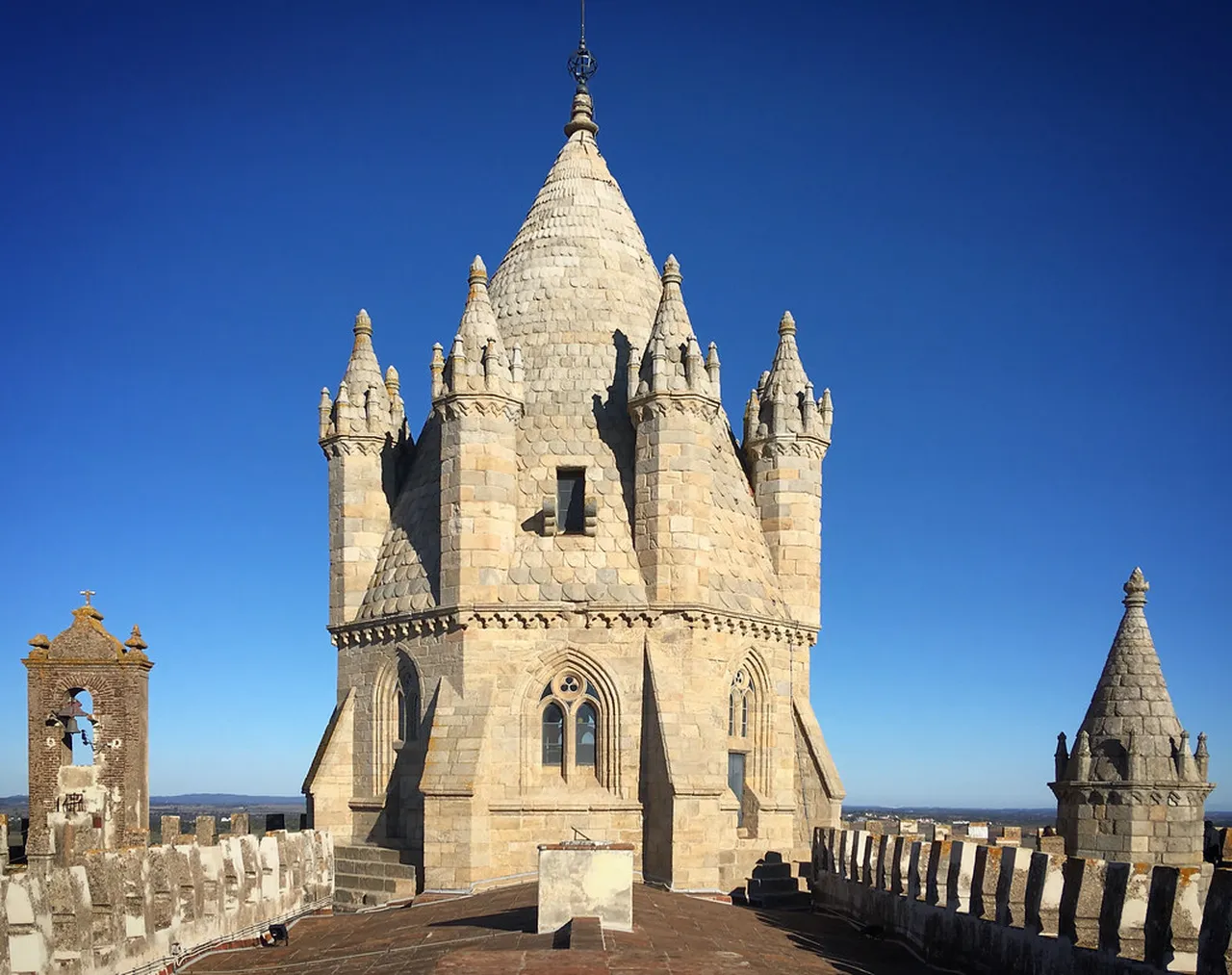
Évora Landmarks: Explore 10 Historic Treasures
Table of Contents
Évora Landmarks
Évora, a captivating city in Portugal, boasts remarkable landmarks that transport visitors back in time. Rich in history, Culture, and architectural beauty, Évora is a UNESCO World Heritage site that showcases the essence of Portugal’s past. This guide will take you through 10 must-visit Évora landmarks, highlighting their historical significance and unique characteristics. Whether you’re a history buff or simply exploring the charming streets, these landmarks reflect the city’s rich narrative and are sure to leave you in awe.
Want to find the best travel deals for this destination? adventure planner solution with our adventure planning specialist!
1. The Roman Temple of Évora: A Testament to Ancient History

The Roman Temple of Évora, also known as the Temple of Diana, stands proudly in the heart of the city. This incredible structure, dating back to the 1st century AD, is a must-see for anyone exploring Évora landmarks. Not only does it reflect the grandeur of ancient Roman architecture, but it also serves as a crucial piece of Portugal’s historical puzzle.
As you walk around the temple, you’ll notice the beautifully preserved columns, which create a dramatic silhouette against the blue sky. Interestingly, despite its name, the temple has never been confirmed to be dedicated to Diana. Nevertheless, it remains one of Évora’s most iconic landmarks and continues to attract historians and tourists alike.
In addition to its beauty, the temple’s location offers a scenic backdrop for photographs. Therefore, be sure to bring your camera and capture this stunning testament to ancient history!
2. Évora Cathedral: A Marvel of Gothic Architecture

Standing tall over the city, Évora Cathedral is a prime example of Gothic architecture. Constructed between the 12th and 13th centuries, this cathedral is not only a place of worship but also a significant historical landmark in Évora. Visitors are often awed by its massive stone façade and intricate details.
Inside, the cathedral unveils stunning altarpieces and beautifully crafted chapels, inviting guests to explore its sacred spaces. Additionally, the climb to the rooftop provides breathtaking panoramic views of Évora’s beautiful landscape, making it a worthwhile endeavor.
Moreover, Évora Cathedral has played a pivotal role in the city’s history, reflecting the cultural evolution from medieval times to the present. This remarkable landmark is certainly worth adding to your itinerary!
3. Chapel of Bones: A Unique Symbol of Mortality

Undoubtedly one of the most intriguing Évora landmarks, the Chapel of Bones captivates visitors with its unique and macabre design. Located within the Igreja de São Francisco, this chapel is a striking reminder of the transience of life. Its walls, adorned with human skulls and bones, convey a poignant message about mortality and the inevitability of death.
As you step inside, the atmosphere is both somber and thought-provoking. The bones, meticulously arranged, serve as a fascinating yet chilling decoration. In fact, the inscription above the entrance reads, “We bones, that are here, for yours await,” encouraging reflection on life and death.
In conclusion, while it may sound eerie, this chapel is a must-visit for those seeking a deeper understanding of Évora’s Culture and history. Don’t forget your camera, as the chapel offers a unique backdrop for memorable photos!
4. Praca do Giraldo: The Heart of Évora’s Social Life

Praca do Giraldo serves as the vibrant heart of Évora’s social life. This bustling square is not only a central meeting point but also showcases the essence of the city’s atmosphere. Surrounded by cafes and shops, visitors can enjoy a leisurely coffee while soaking up the local Culture. Additionally, the space is often host to various events, from live music to local markets, creating a dynamic environment.
As I strolled through the square, I was drawn to its historical significance. The Gothic-style fountain in the middle is a must-see, symbolizing the town’s rich history. Moreover, its archways lead to other notable landmarks, ensuring that you genuinely immerse yourself in Évora’s charm. Don’t miss the chance to visit Praca do Giraldo, as it epitomizes the lively spirit of this beautiful city.
5. The University of Évora: A Center of Learning Since the 16th Century

The University of Évora stands as a renowned institution, having been a center of learning since the 16th century. This historic university is not only significant in terms of its academic contributions but also its architectural beauty. As you walk through its grounds, you will encounter a blend of styles, from Renaissance to Baroque, adding to its allure.
Furthermore, the university is a UNESCO World Heritage site that houses extensive libraries full of ancient texts. While visiting, I found the atmosphere both scholarly and serene. Guided tours are available, providing insights into the university’s fascinating history and its influence on Portuguese education. Hence, do take the opportunity to explore this remarkable institution during your trip to Évora.
6. The Evora Aqueduct: Engineering Masterpiece of the 16th Century
The Evora Aqueduct, an impressive engineering masterpiece, dates back to the 16th century. Originally built to supply water to the city, it stands as a testament to the ingenuity of its creators. As I gazed upon the aqueduct, its grand arches towering against the sky were nothing short of breathtaking.
Interestingly, the structure stretches for several kilometers outside the city, showcasing its historical importance. Today, it not only serves as a reminder of Évora’s past but also as a scenic backdrop for photos. Additionally, walking along its path provides a unique perspective on the city’s landscape. Consequently, the Evora Aqueduct is a must-visit landmark, blending function with beauty in a truly remarkable way.
7. The Palácio de Dom Manuel: A Step Back into Royal History
The Palácio de Dom Manuel, once a royal residence, offers visitors a fascinating glimpse into the opulence of Portuguese history. Located in the heart of Évora, this stunning palace showcases Renaissance architecture that Highlights the grandeur of its era. As you explore its intricately decorated rooms, you will surely appreciate the meticulous craftsmanship that defines this historical site.
Moreover, the palace’s beautiful gardens provide a serene escape from the bustling city. Here, you can contemplate the rich legacy of the Portuguese monarchy. Visitors will find a collection of artifacts that narrate the palace’s storied past, making it a must-see among Évora landmarks. Don’t forget to take a moment and enjoy the tranquil atmosphere!
8. The Igreja de São Francisco: A Gem of Baroque Art
The Igreja de São Francisco is undoubtedly one of Évora’s most breathtaking churches, renowned for its extraordinary Baroque art. The church’s elaborate interior features stunning chapels that are adorned with exquisite gilded details. As you step inside, you will be mesmerized by the sheer splendor of this architectural masterpiece.
In addition to its artistic brilliance, the church houses the famous Chapel of Bones, which serves as a poignant reminder of mortality. This unique space is decorated with human skulls and bones, creating a striking contrast to the church’s overall beauty. Thus, experiencing the Igreja de São Francisco combines both awe and reflection, ensuring a memorable visit.
9. The Cromlech of Almendres: Mysterious Megaliths on the City’s Outskirts
Located just outside the city, the Cromlech of Almendres is a remarkable site that beckons those interested in ancient history. These standing stones, dating back to the Neolithic period, provide insight into the spiritual practices of early civilizations. As you walk among the megaliths, you can’t help but feel a connection to the past.
Additionally, the site’s quiet setting makes it an ideal location for contemplation and photography. Accessing the Cromlech is quite straightforward, allowing every visitor the chance to connect with Évora’s rich cultural heritage. Overall, the Cromlech of Almendres is a must-visit attraction for anyone exploring the Évora landmarks.
10. The Museu de Évora: Discovering Local Heritage and Art
The Museu de Évora is an essential stop for anyone interested in the depth of the region’s history and artistic heritage. Located in a former convent, the museum showcases a diverse collection of artifacts that span from prehistoric times to the modern era. Consequently, visitors can witness the evolution of Évora’s Culture through its exhibits.
One of the standout features of the museum is its impressive collection of Roman artifacts, which link back to Évora’s rich ancient history. Additionally, the museum houses important works of art from both the Renaissance and Baroque periods, giving insights into the artistic evolution in Portugal.
Moreover, the museum often holds temporary exhibitions and educational programs, further emphasizing its role as a vibrant cultural hub. Thus, if you seek to understand the essence of Évora, paying a visit to the Museu de Évora is a must. Plan your visit strategically to make the most out of your experience!
Exploring Évora’s landmarks offers a fascinating glimpse into Portugal’s rich history and Culture. From the breathtaking Roman Temple to the haunting beauty of the Chapel of Bones, each site has its own story to tell and captures the essence of the city. Which landmark intrigues you the most? Share your thoughts and experiences in the comments below, and start planning your visit to discover the historical treasures of Évora.